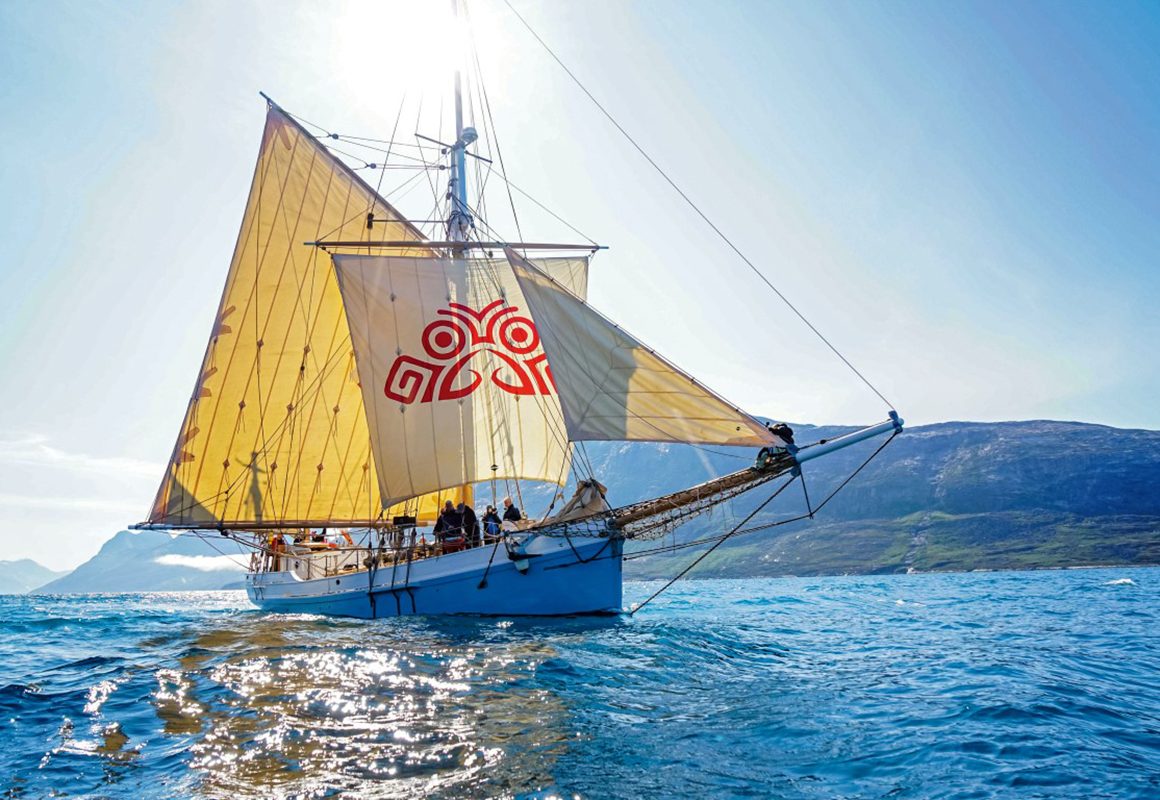

A sail-powered cargo vessel launched in Ireland nearly a century ago is celebrating her restoration by resuming ‘traditional’ deliveries of freight around the Emerald Isle. Her rebirth has also kick-started a wonderful initiative for rejuvenating traditional boatbuilding skills.
Built in Baltimore in West Cork in 1926, the 56-foot ketch Ilen holds a special place in Ireland’s maritime heritage – she’s the country’s only surviving vessel of her kind. Her survival is to be cherished – but her recent resumption of cargo deliveries is also widely-regarded as supporting a new, global eco-trading trend – a sustainable alternative to powered vessels.

Designed by Limerick’s Conor O’Brien (1880-1952), she was built for and delivered to the Falkland Islands where she braved those harsh, demanding latitudes for 70 years – ferrying passengers, cargo, mail and livestock between the islands.
A boat built in Ireland for the Falklands?
It seems a little improbable, but it all began with O’Brien’s visit to that remote outpost between the two world wars. He became the first Irishman to circumnavigate the planet (1923 -1925) in his ketch, the Saoirse. Along the way he stopped off at Port Stanley where the locals, impressed at how well the Saoirse rode the waves, asked O’Brien if he could build them a similar boat.
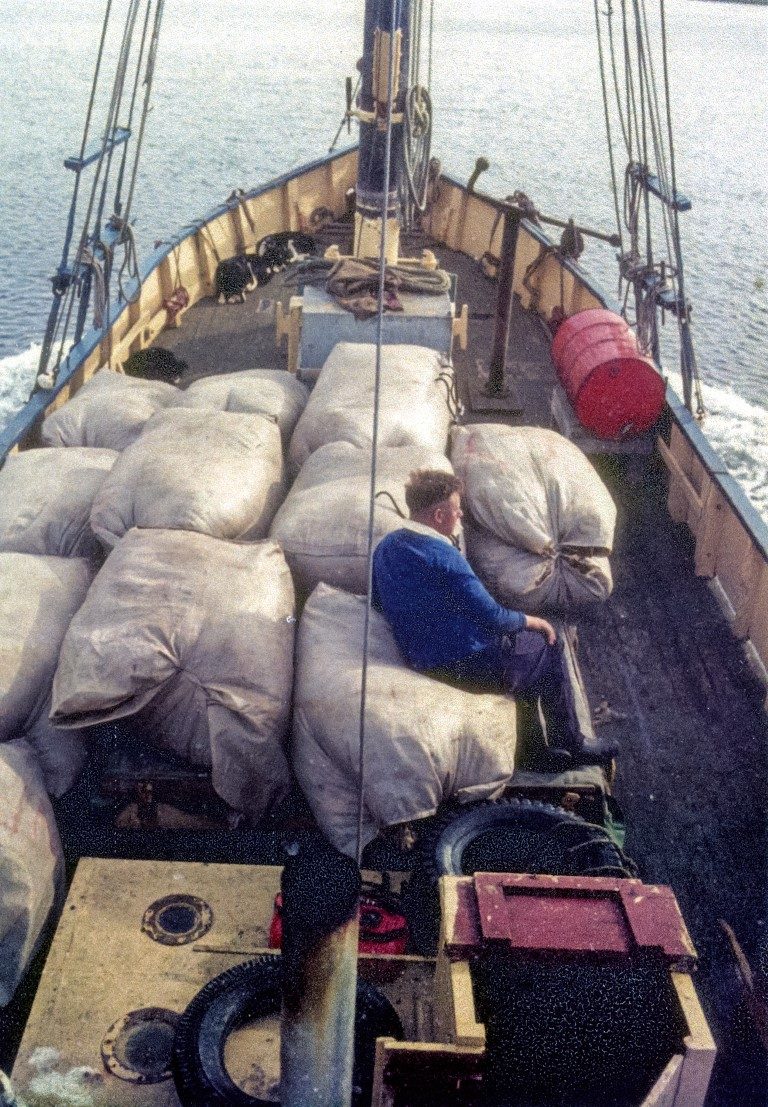
AK Ilen
Indeed he could. Ilen was born in the same boatyard and fashioned by the same crew who’d built Saoirse – at the Baltimore Fisheries School in West Cork – Ireland’s first vocational school. She was named Ilen after the local river. Along with two cousins as crew, O’Brien delivered her to the Falkland Islands Company at Port Stanley in January, 1927 and received £1,500 for his troubles. She remained in service until the early 1990s.
That she was able to return to her country of birth for restoration is largely thanks to the efforts of one man – Limerick’s Gary Mac Mahon. Passionate about preserving Ireland’s maritime heritage, he travelled to the Falklands in 1997 to explore the possibility of bringing the old ketch home.
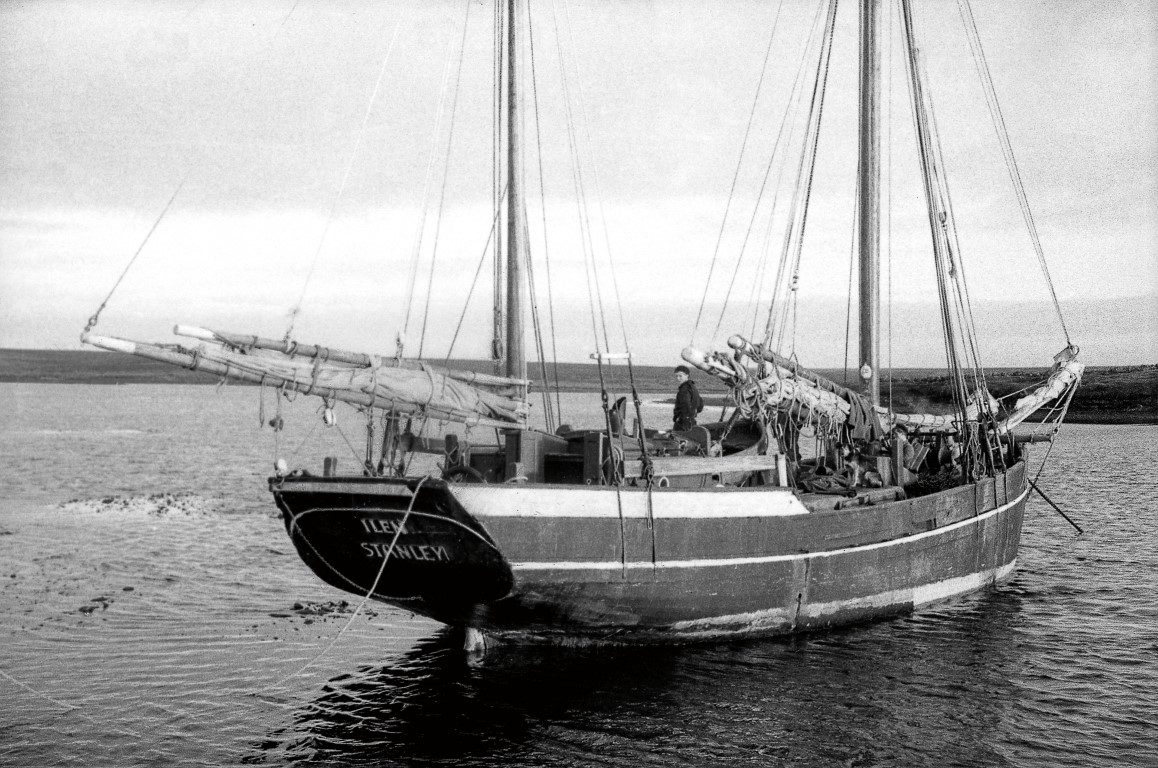
She was in a bad way – at the time he described her condition as ‘shook’ – a quaint Irish term that describes feeling frightened or scared – generally unable to cope. The copper sheeting on the hull, he said, was all that was holding her together.
Buying her was one thing – getting her to Ireland was trickier. Eventually, though, the 45-tonne Ilen was loaded on to a Russian cargo ship and after a 30-day, 8,000nm voyage was discharged in Dublin in October 1997.
Mac Mahon and a crew sailed her from Dublin to Baltimore where she was given a rapturous welcome – she was back home after 72 years. Sailing the old derelict in those waters would have left me feeling miserably shook…
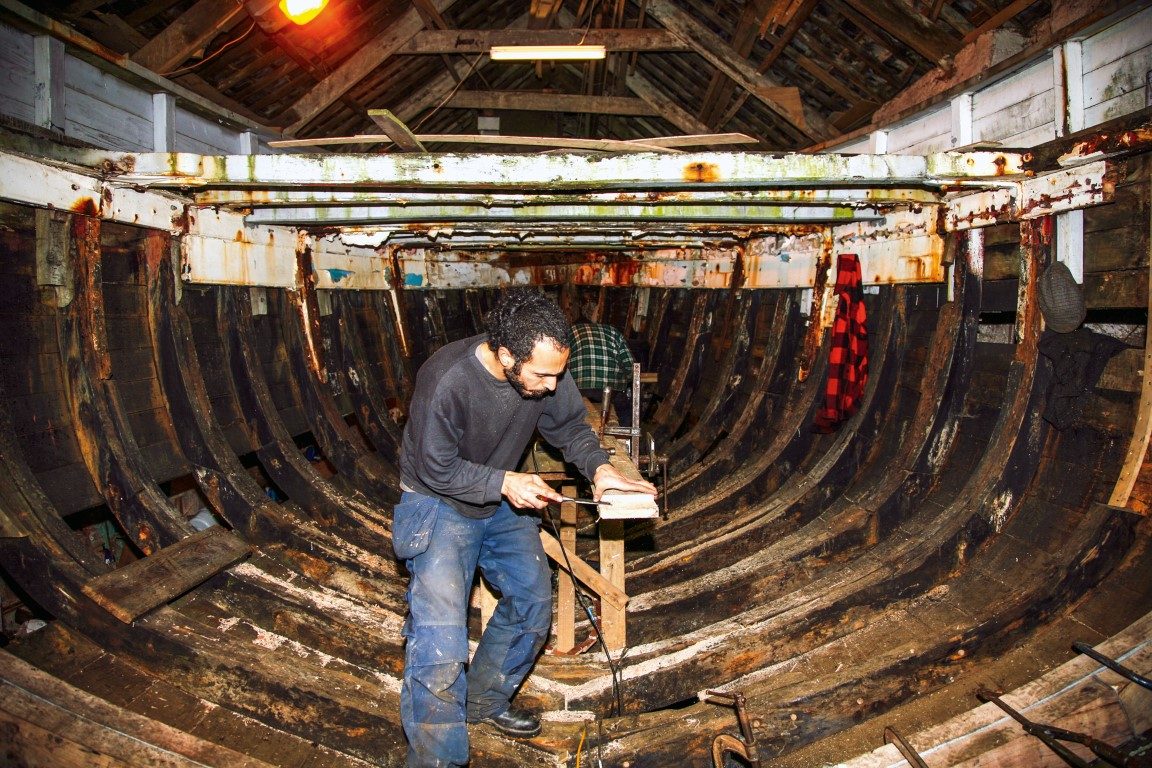
However infectious, Mac Mahon’s enthusiasm could only take Ilen part of the way along her restoration journey. The project needed serious funding. But he was nothing if not committed. After a few years of cajoling and canvassing he was able to cobble together a team to advance the project.
This had multiple spin-offs – among them the creation of a workshop in Limerick dedicated to a community educational programme teaching carpentry, joinery – and traditional boatbuilding.
Restoration
The 10-year rebuild was a joint effort between Hegarty’s Boatyard (Oldcourt, Skibbereen) and the Ilen Workshop. It proved an enormously popular educational driver. People could experience first-hand the skills of wooden boatbuilding through a series of five-day workshops open to the public. These included talks on the types of timbers used in boatbuilding, and an introduction to wooden boat construction.
The entire initiative, says Mac Mahon, was open to anyone who could handle a sail or a shipwright’s maul, or who wanted to learn. “We became a school and a network with a national and international theatre of operations. The project mined into the elemental forces of materials and the environment, nurturing and releasing the deep-buried treasure of people’s inner selves.
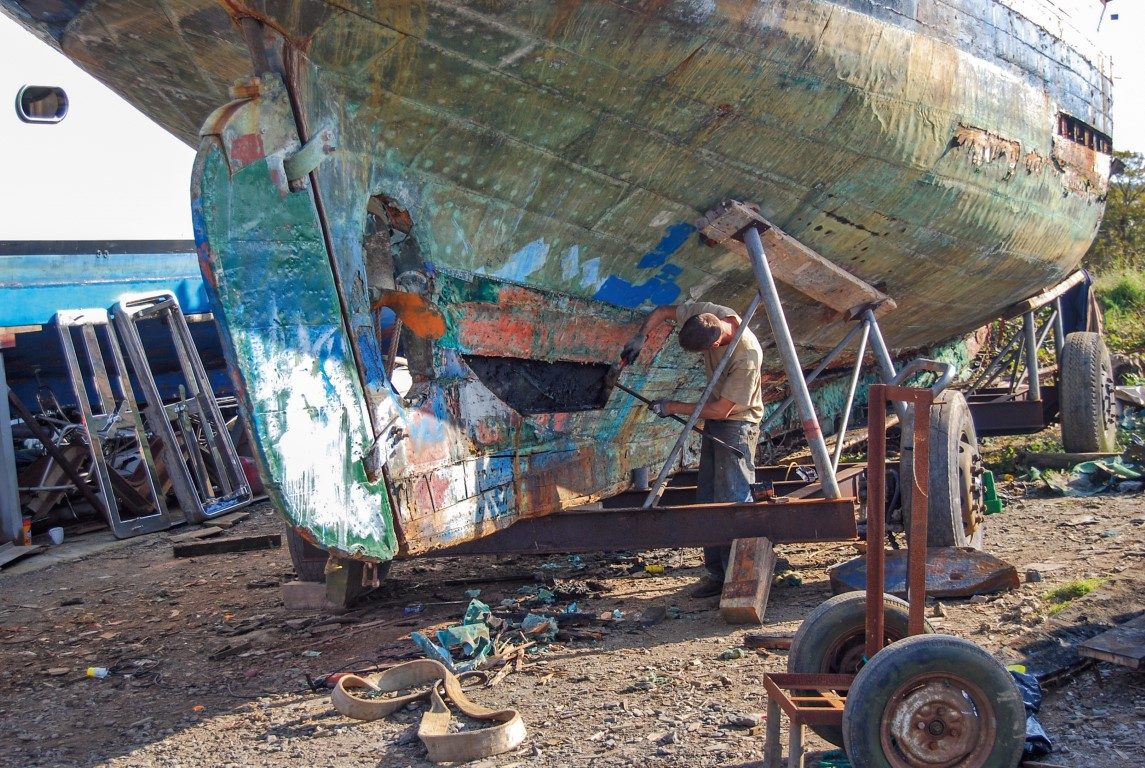
“Our local goal was rebuilding the cultural interface between Limerick and its surroundings and recognising our marine inheritance. The educational, economic and life-enhancing forces of river, estuary and sea are powerful – the recovery and development of the cultural traditions allows us to participate in their beauty and energy.”
Ilen’s makeover was extensive – it included new spars, stout ribs of grown Irish oak, long planks of larch from the Bavarian alps and Douglas fir for the decks. Eventually, in 2014, she was ready for the ‘whiskey plank’ ceremony – when the last plank of a wooden ship is fixed. It’s traditionally celebrated with a modest gathering and a “drop o’ the quare stuff”.
Mac Mahon’s vision was always focused on using the restored vessel to extend the Irish heritage and sustainability message. To that end she has become a cargo delivery vessel, carrying locally-produced goods to ports around the country – Ishka water, Limerick beer and Thomond Gate Distillery whiskey, Cape Clear Gin and Red Strand Coffee (roasted in West Cork).

These – and additional products – are today delivered to many of the country’s smaller ports which are able to accommodate Ilen’s shallow draft – Kilrush, Foynes, Limerick, Kilronan in the Aran Islands, Dingle and Cork City.
Says Mac Mahon: “The Ilen is a community and training project. She’s part of a growing fleet of sailing ships around the world providing an alternative and more environment-friendly way of delivering cargo. Ireland has loads of wind, but only the Ilen can harness it to deliver products in a sustainable manner.

AK Ilen 1976
“This method of cargo delivery was phased out with the expansion of the road network in the 1920s and 1930s. But all over Europe, sail cargo deliveries are springing up and people are using the trade winds to travel to Madeira and the Caribbean, bringing back rum and coffee. Eco-trading is a growing movement worldwide and serious design time is being put into designing full-sized modern cargo ships that can harness the wind and reduce fossil fuel use and air pollution.”
Last year Ilen also completed an international voyage – a transatlantic crossing to Greenland as part of a relationship-building project to link youth in Limerick City with youth in Nuuk. The theme was Salmon’s Wake, as 2019 was the Year of the Atlantic Salmon. The symbol on Ilen’s square sail is a blend of ancient Irish and Inuit folk motifs. It depicts a wild migratory salmon amid the North Atlantic.

This year, before Covid-19 upended the world, Ilen was to have delivered freight to Madeira, some 95 years after she last docked there on her way to the Falklands. Perhaps, in a post-Covid world the voyage will be revisited.
In a fitting recognition of Mac Mahon’s dedication, he received the prestigious Irish Sailing President’s Award last year. It acknowledged his work, over 20 years, in founding and leading the Ilen project. And the project itself picked up the 2019 Industrial Heritage Association of Ireland’s Award – celebrating the old ketch’s rebuild and its far-reaching community education work.
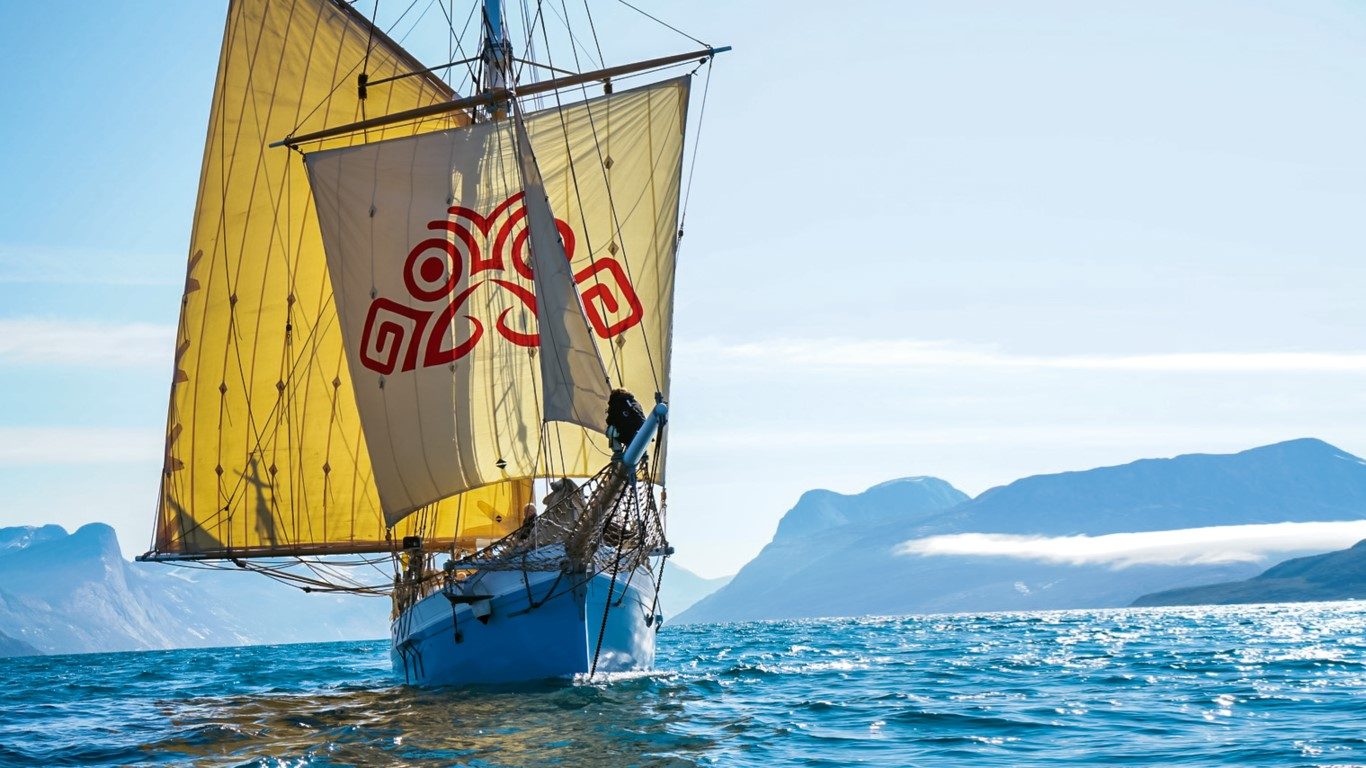
In addition to its rich maritime heritage, the land of the leprechauns can lay claim to some of English literature’s greatest poets and writers. Poetry is in the nation’s blood. One of my favourite comments about the ‘relativity’ of the global catastrophe that is Covid-19 comes from an Ilen project team member:
“Anaerobic allegations of personal and social pathology simply vanish in the iridescent light of the sun and the salutary terror of wind and wave.” Indeed.
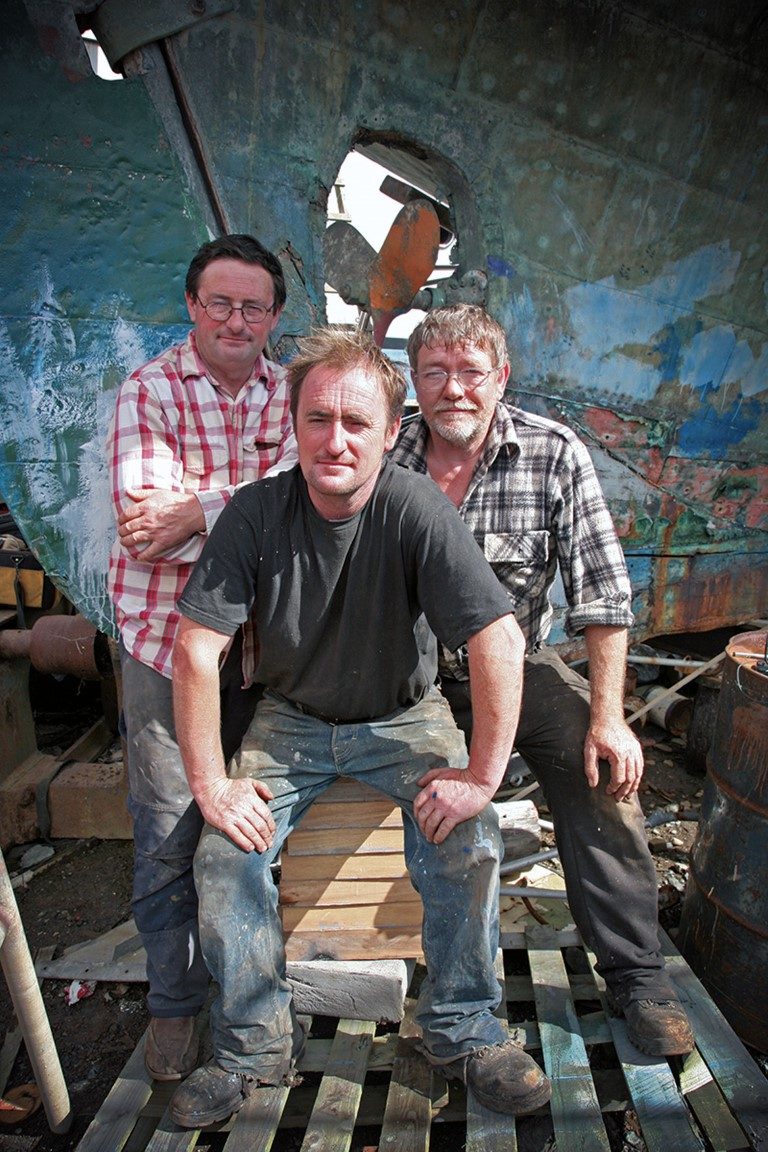
Today, the Ilen serves both as a splendid cargo vessel – last year she visited 23 ports – and a floating classroom. And for those who enjoy happy coincidences there is surely great satisfaction in knowing that a vessel originally built in Ireland’s first vocational school is – nearly a century later – again featuring in the advancement of education.
The wheel of life has turned a full circle.




